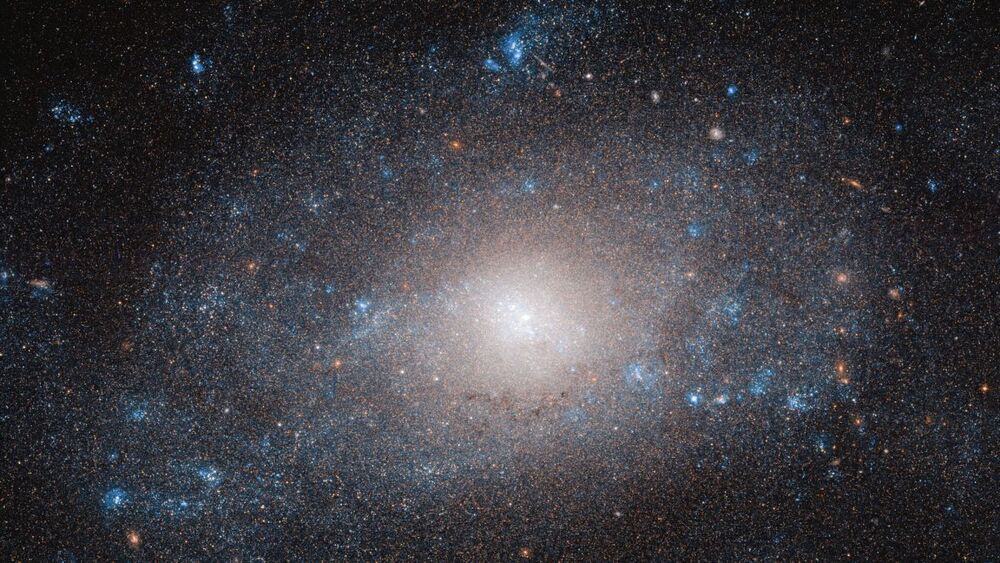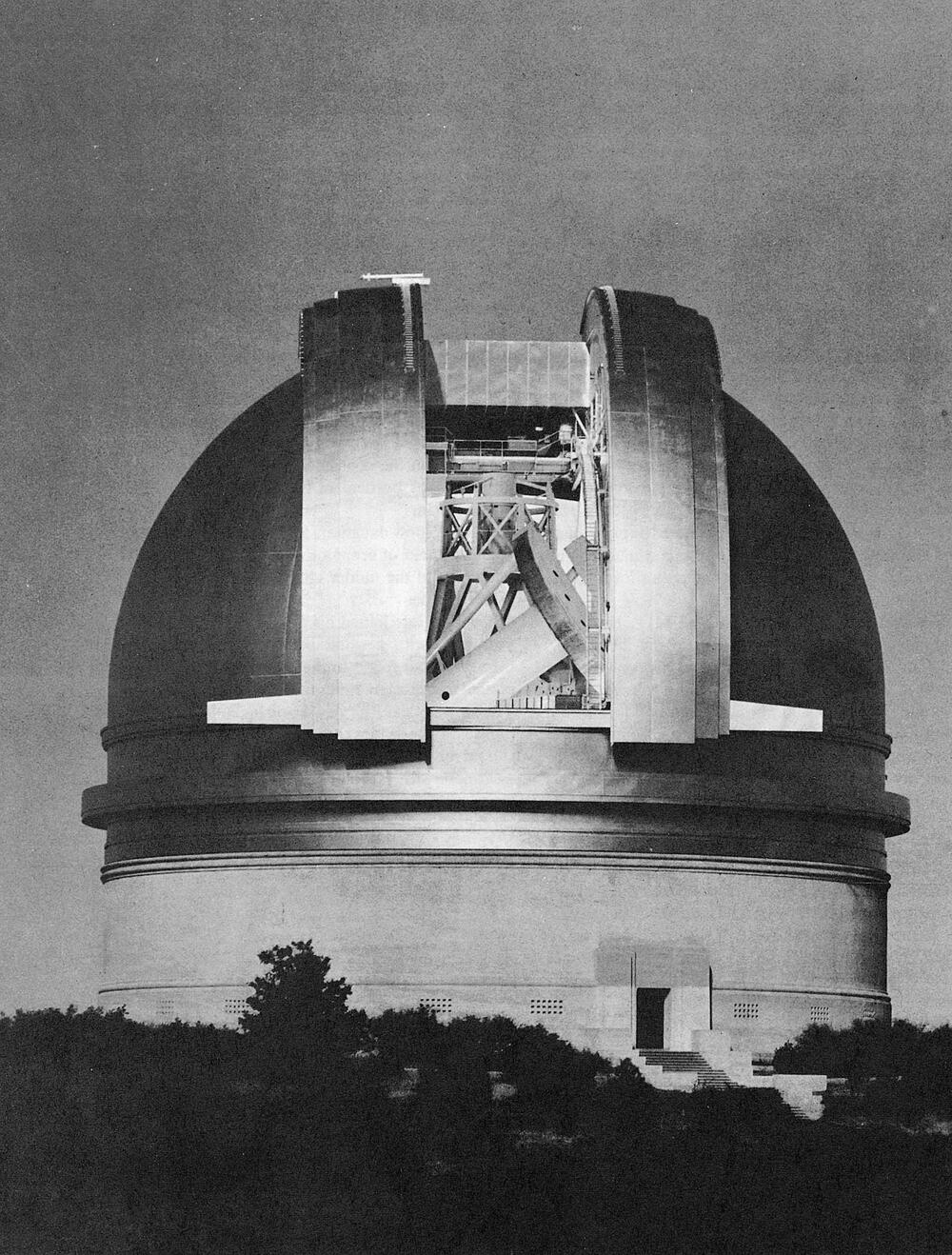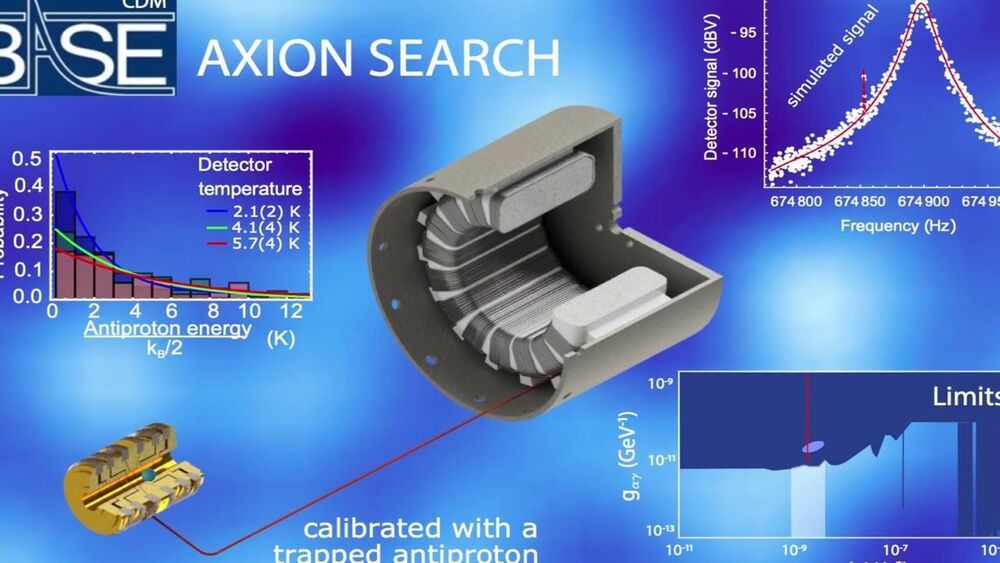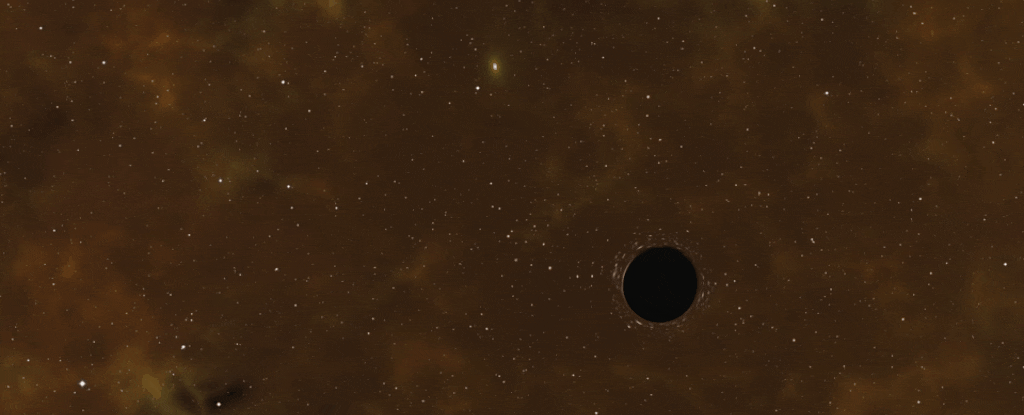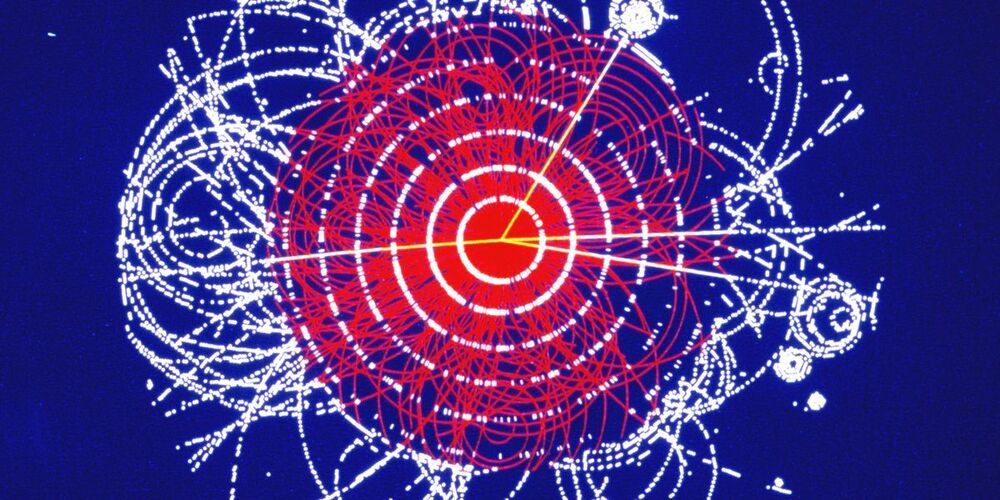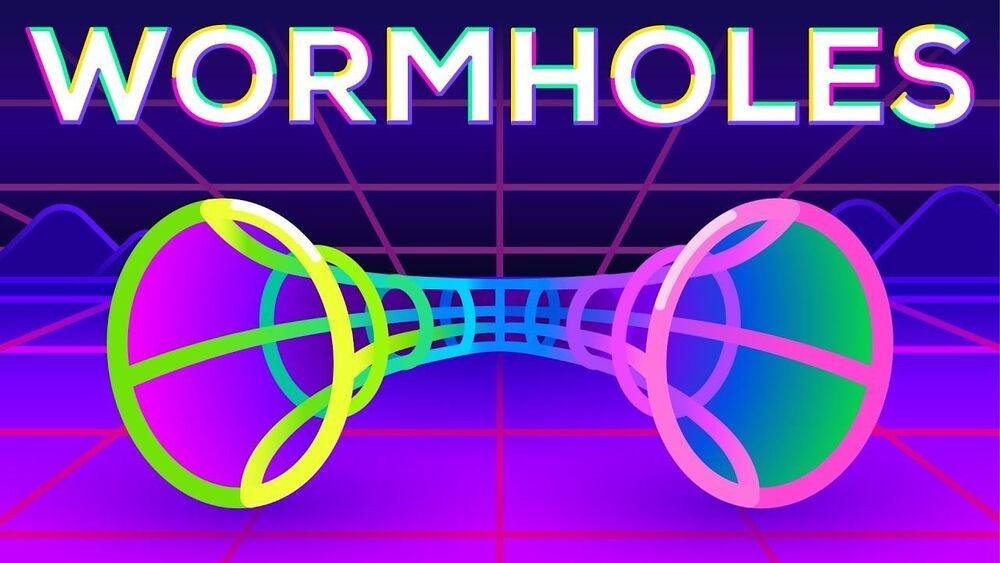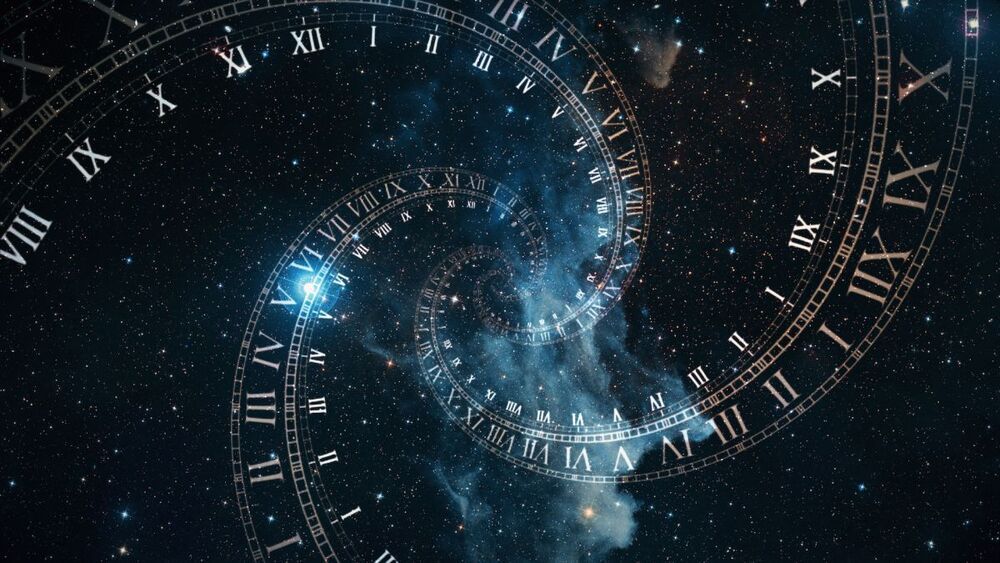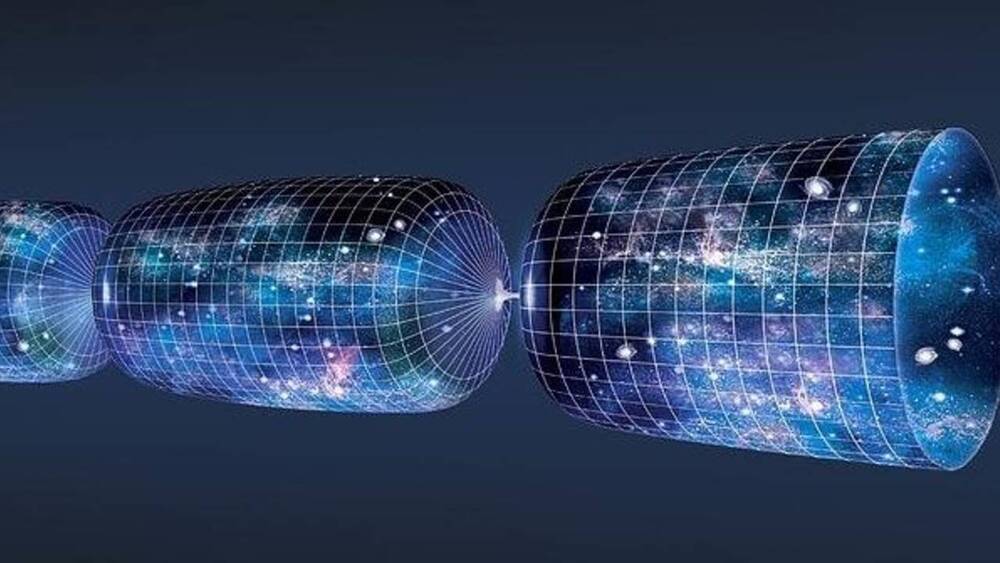Scientists are finally figuring out how much dark matter — the almost imperceptible material said to tug on everything, yet emit no light — really weighs.
Category: cosmology – Page 294
Astronomy owes George Ellery Hale and the Palomar Observatory a great debt of gratitude for persevering with the construction of a telescope that forever changed cosmology.
BASE opens up new possibilities in the search for cold dark matter.
The Baryon Antibaryon Symmetry Experiment (BASE) at CERN’s Antimatter Factory has set new limits on how easily axion-like particles in a narrow mass range around 2.97 neV can turn into photons, the particles of light. BASE’s new result, published by Physical Review Letters, describes this pioneering method and opens up new experimental possibilities in the search for cold dark matter.
Axions, or axion-like particles, are candidates for cold dark matter. From astrophysical observations, we believe that around 27% of the matter-energy content of the universe is made up of dark matter. These unknown particles feel the force of gravity, but they barely respond to the other fundamental forces, if they experience them at all. The best accepted theory of fundamental forces and particles, called the Standard Model of particle physics, does not contain any particles that have the right properties to be cold dark matter.
Since the Standard Model leaves many questions unanswered, physicists have proposed theories that go beyond it, some of which explain the nature of dark matter. Among such theories are those that suggest the existence of axions or axion-like particles. These theories need to be tested, and many experiments have been set up around the world to look for these particles, including at CERN. For the first time, BASE has turned the tools developed to detect single antiprotons, the antimatter equivalent of a proton, to the search for dark matter. This is especially significant as BASE was not designed for such studies.
“BASE has extremely sensitive detection systems to study the properties of single trapped antiprotons. These detectors can also be used to search for signals of particles other than those produced by antiprotons in traps. In this work, we used one of our detectors as an antenna to search for a new type of axion-like particles,” says Jack Devlin, a CERN research fellow working on the experiment.
Compared to the large detectors installed in the Large Hadron Collider (LHC), BASE is a small experiment. It is connected to CERN’s Antiproton Decelerator, which supplies it with antiprotons. BASE captures and suspends these particles in a Penning trap, a device that combines electric and strong magnetic fields. To avoid collisions with ordinary matter, the trap is operated at 5 kelvins (around-268 degrees Celsius), a temperature at which exceedingly low pressures, similar to those in deep space, are reached. In this extremely well-isolated environment, clouds of trapped antiprotons can exist for years at a time. By carefully adjusting the electric fields, the physicists at BASE can isolate individual antiprotons and move them to a separate part of the experiment. In this region, very sensitive superconducting resonant detectors can pick up the tiny electrical currents generated by single antiprotons as they move around the trap.
I don’t think that star is the same after that one night stand.
When black holes swallow down massive amounts of matter from the space around them, they’re not exactly subtle about it. They belch out tremendous flares of X-rays, generated by the material heating to intense temperatures as it’s sucked towards the black hole, so bright we can detect them from Earth.
This is normal black hole behaviour. What isn’t normal is for those X-ray flares to spew forth with clockwork regularity, a puzzling behaviour reported in 2019 from a supermassive black hole at the centre of a galaxy 250 million light-years away. Every nine hours, boom — X-ray flare.
After careful study, astronomer Andrew King of the University of Leicester in the UK identified a potential cause — a dead star that’s endured its brush with a black hole, trapped on a nine-hour, elliptical orbit around it. Every close pass, or periastron, the black hole slurps up more of the star’s material.
A new paper suggests that the mysterious X17 subatomic particle is indicative of a fifth force of nature.
Very interesting.
Albert Einstein’s theory of general relativity profoundly changed our thinking about fundamental concepts in physics, such as space and time. But it also left us with some deep mysteries. One was black holes, which were only unequivocally detected over the past few years. Another was “wormholes” – bridges connecting different points in spacetime, in theory providing shortcuts for space travellers.
Wormholes are still in the realm of the imagination. But some scientists think we will soon be able to find them, too. Over the past few months, several new studies have suggested intriguing ways forward.
Black holes and wormholes are special types of solutions to Einstein’s equations, arising when the structure of spacetime is strongly bent by gravity. For example, when matter is extremely dense, the fabric of spacetime can become so curved that not even light can escape. This is a black hole.
Physicists imagine a day when they will be able to design a clock that’s so precise, it can detect dark matter.
Circa 2018 o.o!
We are not living in the first universe. There were other universes, in other eons, before ours, a group of physicists has said. Like ours, these universes were full of black holes. And we can detect traces of those long-dead black holes in the cosmic microwave background (CMB) — the radioactive remnant of our universe’s violent birth.
At least, that’s the somewhat eccentric view of the group of theorists, including the prominent Oxford University mathematical physicist Roger Penrose (also an important Stephen Hawking collaborator). Penrose and his acolytes argue for a modified version of the Big Bang.
In Penrose and similarly-inclined physicists’ history of space and time (which they call conformal cyclic cosmology, or CCC), universes bubble up, expand and die in sequence, with black holes from each leaving traces in the universes that follow. And in a new paper released Aug. 6 in the preprint journal arXiv— apparent evidence for Hawking points in the CMB sky — Penrose, along with State University of New York Maritime College mathematician Daniel An and University of Warsaw theoretical physicist Krzysztof Meissner, argued that those traces are visible in existing data from the CMB.
Nearly every galaxy hosts a monster at its center—a supermassive black hole millions to billions times the size of the Sun. While there’s still much to learn about these objects, many scientists believe they are crucial to the formation and structure of galaxies. What’s more, some of these black holes are particularly active, whipping up stars, dust and gas into glowing accretion disks emitting powerful radiation into the cosmos as they consume matter around them. These quasars are some of the most distant objects that astronomers can see, and there is now a new record for the farthest one ever observed.
A team of scientists, led by former UC Santa Barbara postdoctoral scholar Feige Wang and including Professor Joe Hennawi and current postdoc Riccardo Nanni, announced the discovery of J0313-1806, the most distant quasar discovered to date. Seen as it would have appeared more than 13 billion years ago, this fully formed distant quasar is also the earliest yet discovered, providing astronomers insight into the formation of massive galaxies in the early universe. The team’s findings were released at the January 2021 meeting of the American Astronomical Society and published in Astrophysical Journal Letters.
Quasars are the most energetic objects in the universe. They occur when gas in the superheated accretion disk around a supermassive black hole is inexorably drawn inwards, shedding energy across the electromagnetic spectrum. This releases enormous amounts of electromagnetic radiation, with the most massive examples easily outshining entire galaxies.
A distant galaxy harbors an active black hole and active star formation at the same time – an unusual coincidence.
